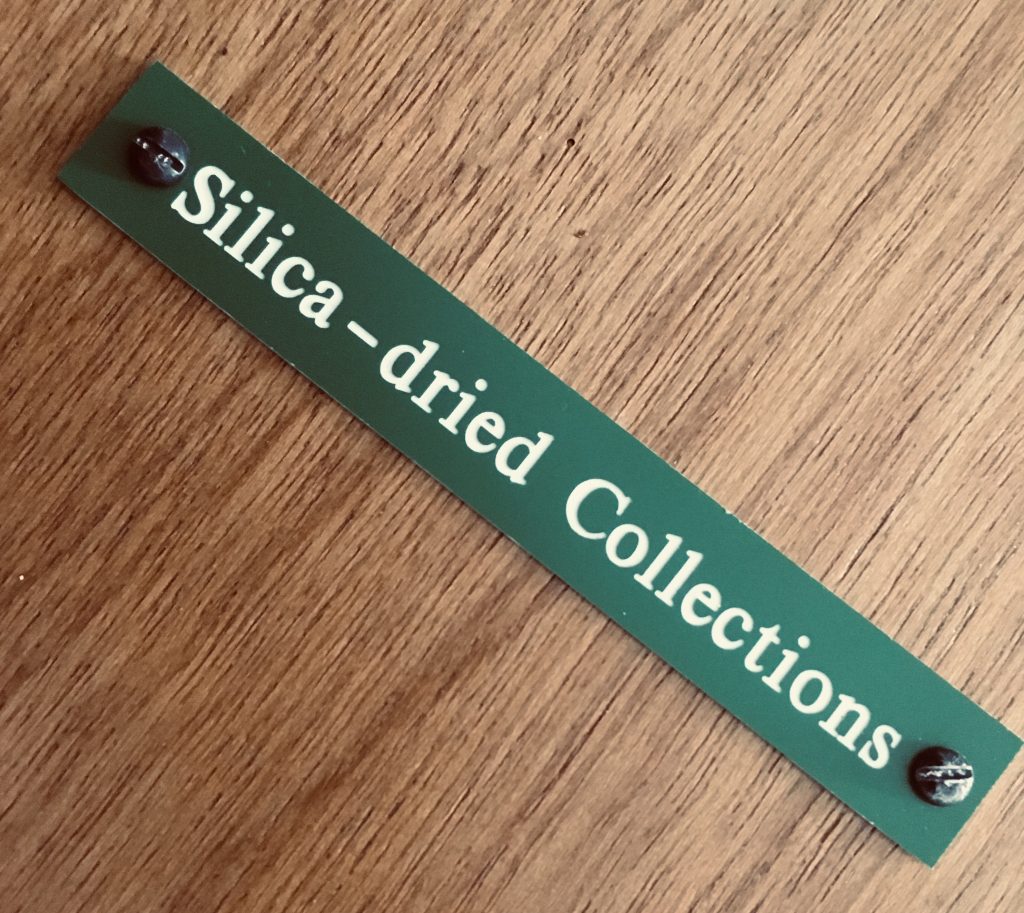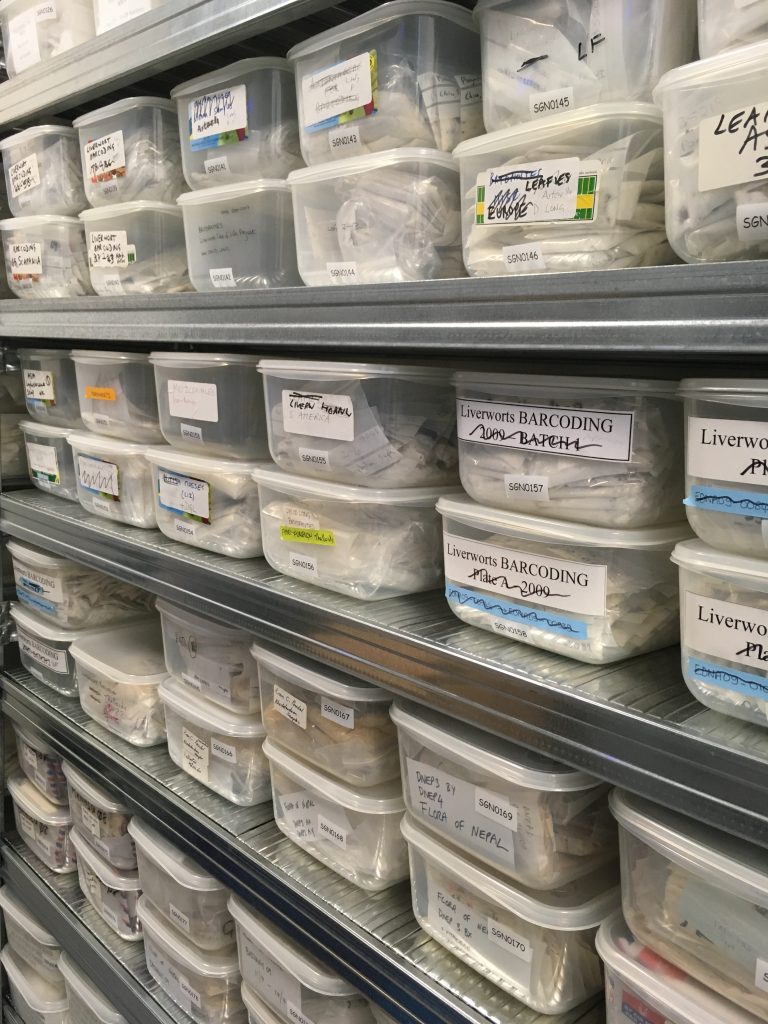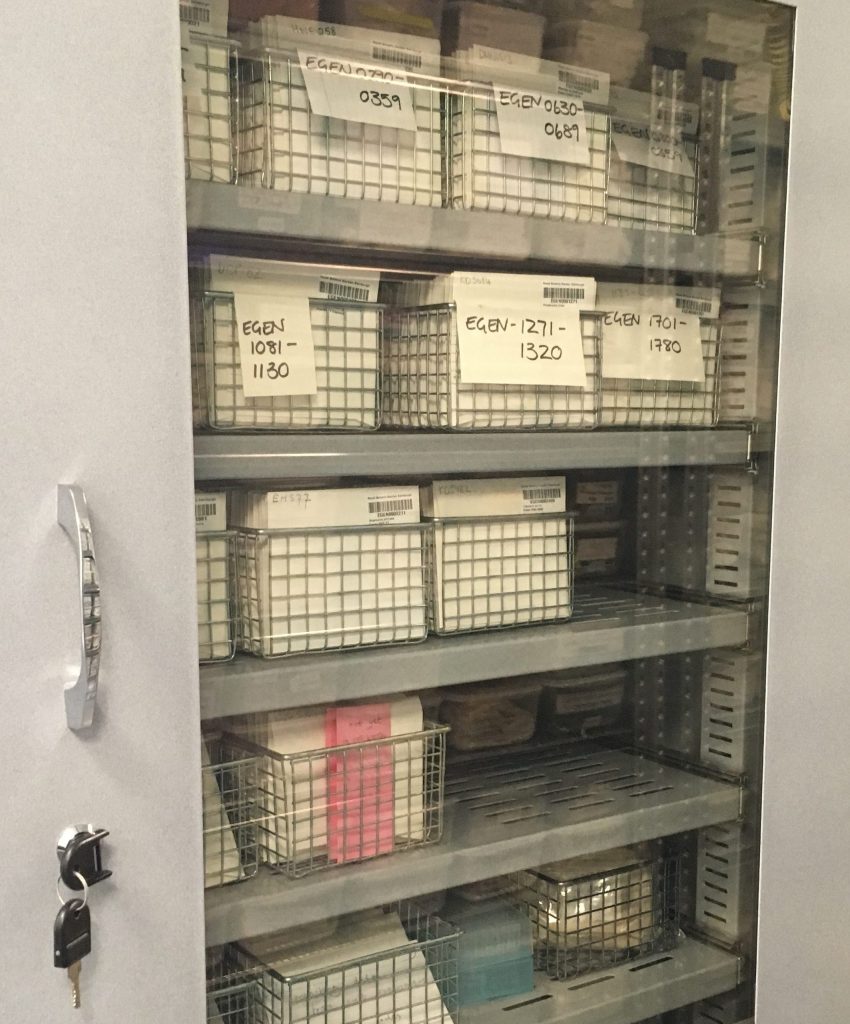
We have been working towards protocols for the management and storage of the RBGE specimens dried in silica gel.
The bulk of this material is collected by RBGE staff and associates and is linked to other RBGE collections, either herbarium specimens and/or accessions in the living collection. The link to other RBGE collections and their associated data makes the silica-dried collection a valuable resource for further research.
For the essentials of collecting and storing plant material in silica gel for DNA extraction – i.e. ‘the teabag method’, have a look at the short video on https://www.youtube.com/watch?v=5-9GR1smZ34.

Most of the material dried in silica is now stored in the Silica-dried Collections room (in the basement), with an overflow in the Herbarium Long Store.
While much of the material is kept in numbered boxes, with background information kept in a spreadsheet, we have been testing other approaches to manage this collection.

To try and make more of the link to the collection data associated with the silica-dried material, and to make the collection more accessible, new incoming material is currently curated differently.
First, the teabag with the plant material is taken out of (the tub with) the silica in which it is stored. The teabag is put in a paper capsule, and the paper capsules are placed in wire baskets.
Subsequently, the material is databased and barcoded. Both the paper capsule and the teabag with the material in it are labelled with the barcode (and with the collector code and collection number, or with an RBGE accession number).
The barcoded accessions are housed in one of three low-humidity cabinets in the Silica-dried Collections Room. If any material is required for research, this can be requested through the Herbarium.

